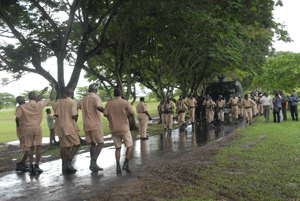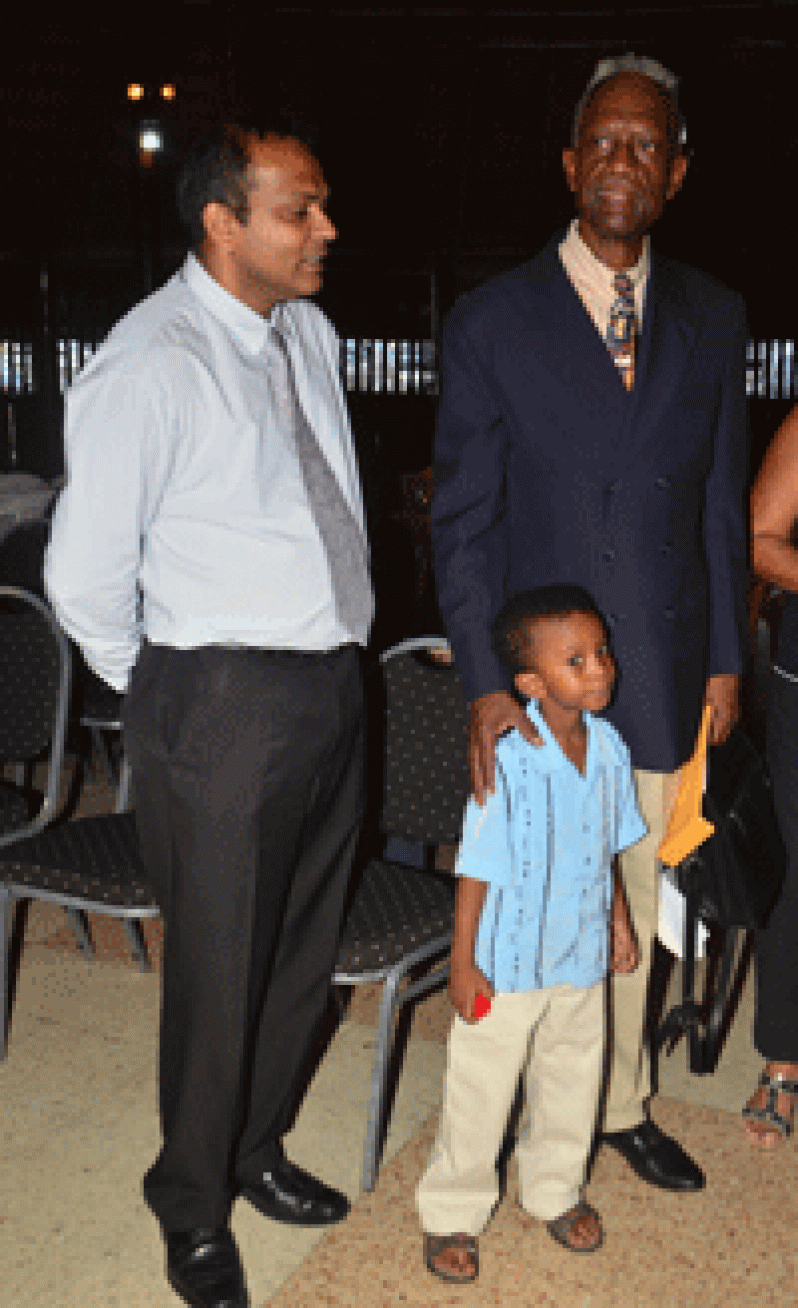– Rohee defends purchase of $37M vehicle
THE Guyana Police Force (GPF) held a demonstration on the use of the water cannon in crowd control, yesterday, at the National Park in Georgetown.  Done for the benefit of the media, recruits were used as loud protestors while members of the Tactical Services Unit (TSU) manned their positions near the $37M water cannon vehicle with the aim to disperse the crowd by spraying its members with water.
Done for the benefit of the media, recruits were used as loud protestors while members of the Tactical Services Unit (TSU) manned their positions near the $37M water cannon vehicle with the aim to disperse the crowd by spraying its members with water.
After the demonstration, Acting Police Commissioner Leroy Brumell told reporters how effective a water cannon is, and what its various uses are. He admitted that the police needed more training in its use, but was certain the cannon had demonstrated its power once used for the purpose intended – crowd control in the event of a riot.
On hand to witness the demonstration was Home Affairs Minister Clement Rohee, who told the media that the water cannon was procured to assist in capacity building of the GPF. Since Police Forces around the world are equipped with the most modern pieces of equipment, it was fitting for the GPF to have a water cannon, he said.
He also said that the water cannon was handed over to the GPF for that entity to decide on its use, since the GPF was not being politically directed. The cannon will therefore be used at the Force’s discretion.
Rohee explained that capacity building does not only mean that the GPF will be equipped with computers, ICT equipment and cameras, but also with equipment that is required for crime fighting. The Force would be furnished with equipment based on requests made.
The minister told reporters that the GPF does not only need boats, helicopters and mobile police stations, but it also needs other equipment to gradually modernise in terms of equipment and training.
“We need to see this (water cannon) as part of the package of capitalisation of the police force in the same way the President has assured the Guyana Defence Force (GDF) would be capitalised. This is part and parcel for normal process to bring GPF up to modernisation, either crowd control, or crime fighting, or whatever the case might be.”
Rohee also shrugged off suggestions that the purchase of a $37 million water cannon was done ahead of more pressing needs by the police force, such as being equipped with boats and helicopters. The minister noted that the water cannon was necessary for the GPF, and he does not intend to apologise for securing this type of equipment for the Force, because all police forces around the world have it.
OPINIONS GALORE
Asked if priorities were misplaced when a water cannon was acquired instead of a helicopter or boats to fight crimes for the GPF, Rohee told reporters that, depending on who was placing and misplacing priorities, people always have opinions of what is best and what is not for the Police Force at a particular given time, and they are free to express their opinions, as there are a lot of experts out there.
Rohee told the media that the GPF requested and received the water cannon. Giving an example, he said that the E&F Division had procured a couple hundred million dollars to build a mobile police station because the Force needed it to deal with crimes in the hinterland. He said, “That didn’t come last (year), but it came this year; so it all depends on what the Force tells us of what their priorities are. So far, the GPF did not tell us they needed a plane or a helicopter. What we need is more equipment to deal with interior crimes, equipment for forensic[a] lab and so forth. I have no doubt that, sometime in the future, the GPF will have all those things, but they are based on prioritising as the situation unfolds.”
Last November 17, Home Affairs Minister Clement Rohee handed over the keys for the $37M water cannon to the Police Force, on the Tactical Services Unit (TSU) Drill Square at Eve Leary. Intended to be used to restore public order should the occasion arise, the water cannon can use foam, tear gas or water to disperse large crowds in the event of a riot.




.jpg)









